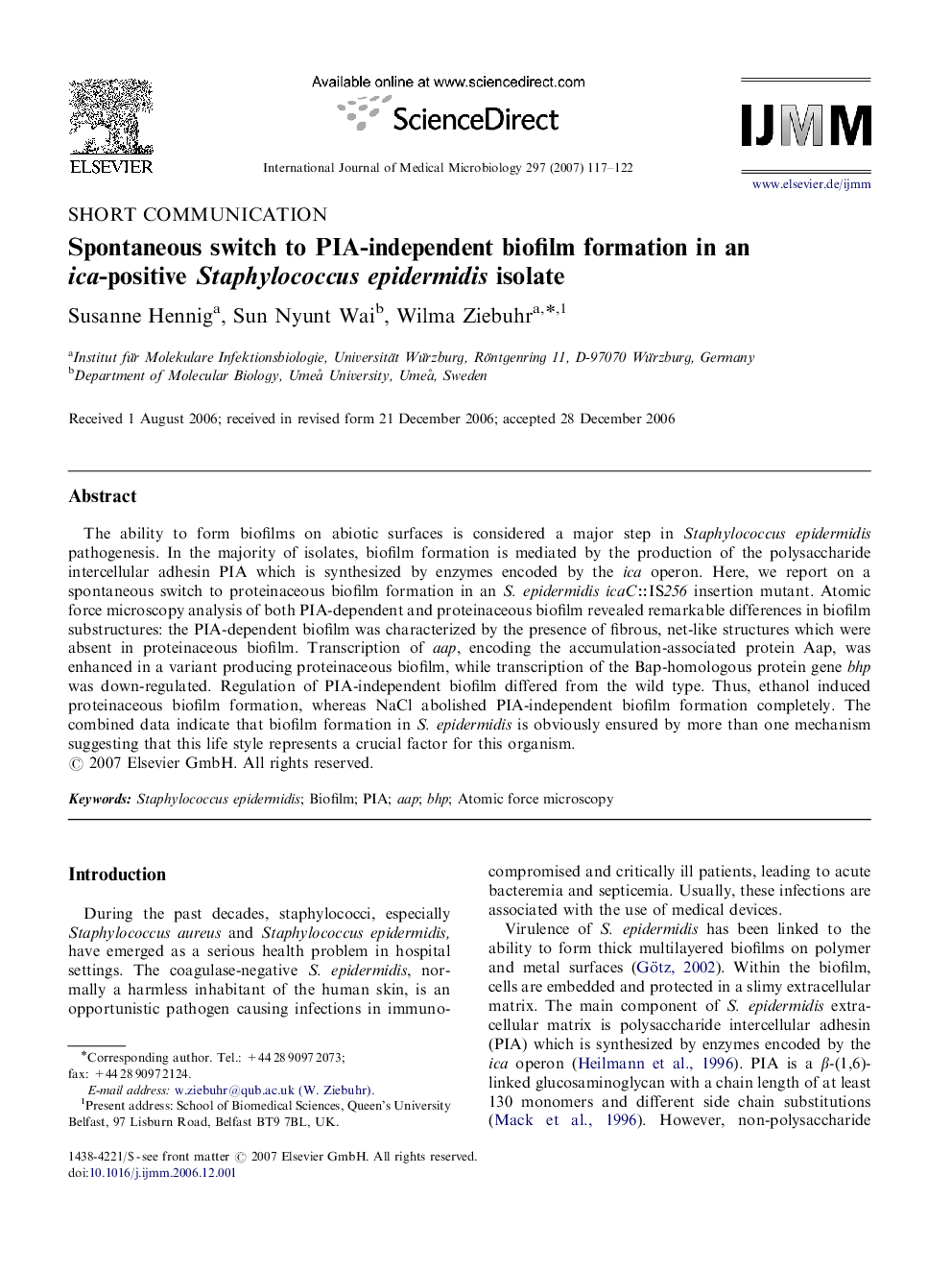| Article ID | Journal | Published Year | Pages | File Type |
|---|---|---|---|---|
| 2055017 | International Journal of Medical Microbiology | 2007 | 6 Pages |
The ability to form biofilms on abiotic surfaces is considered a major step in Staphylococcus epidermidis pathogenesis. In the majority of isolates, biofilm formation is mediated by the production of the polysaccharide intercellular adhesin PIA which is synthesized by enzymes encoded by the ica operon. Here, we report on a spontaneous switch to proteinaceous biofilm formation in an S. epidermidis icaC∷IS256 insertion mutant. Atomic force microscopy analysis of both PIA-dependent and proteinaceous biofilm revealed remarkable differences in biofilm substructures: the PIA-dependent biofilm was characterized by the presence of fibrous, net-like structures which were absent in proteinaceous biofilm. Transcription of aap, encoding the accumulation-associated protein Aap, was enhanced in a variant producing proteinaceous biofilm, while transcription of the Bap-homologous protein gene bhp was down-regulated. Regulation of PIA-independent biofilm differed from the wild type. Thus, ethanol induced proteinaceous biofilm formation, whereas NaCl abolished PIA-independent biofilm formation completely. The combined data indicate that biofilm formation in S. epidermidis is obviously ensured by more than one mechanism suggesting that this life style represents a crucial factor for this organism.
